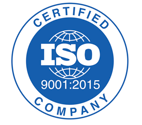The European Medical Device Regulations (MDR 2017/745) and In Vitro Diagnostic Regulations (IVDR 2017/746) have been entered into force as of May 26, 2017. The Regulations' entry into force is the last milestone before full implementation of the MDR in May 2020 and the IVDR in May 2022. With the regulatory changes resulting from EU MDR and IVDR, manufacturers much be prepared for increased scrutiny of their Clinical Evaluation Reports (CERs).
These new regulations recognize historical problems and aims to strengthen regulatory requirements and oversight to foster a more FDA-like regulatory environment. There are significantly heightened expectations with regard to the appropriate use of clinical data to support CE Marks.
Every medical device sold into Europe, irrespective of its classification, must have an up-to-date Clinical Evaluation Report (CER) as part of its Technical File. A renewed guidance in the form of MEDDEV 2.7/1 Rev. 4 was released in June 2016. PRP assists companies to address common sources of non-compliance; clarify requirements and address gaps in clinical evaluation guidance; and help manufacturers attain compliance and prepare for future regulatory changes. Moreover by taking a pro-active approach to clinical evaluation reporting, medical device companies can achieve improvements and reap business benefits that will keep them ahead in their market.
One of the biggest impacts is to manufacturers with existing products on the market. There are requirement for clinical evidence specific to every product. Past use of data from similar products and published data from competitor products are extremely limited and possibly not accepted at all. This portion of the change will apply to existing and currently-approved products after the change transition period. Additionally, historical market data and complaint/vigilance data will not be accepted in lieu of a true clinical study.
If product-specific evidence through an appropriate clinical study is deemed insufficient, the product’s certificate will most likely not be renewed. Therefore, it’s vital that manufacturers assess their currently-marketed products and select those that will be marketed after the transition period in order to initiate the required clinical studies as soon as possible.
Additionally, manufacturers must remove all products that will be orphaned at the end of the transition period from the market as soon as their certificates expire.
Let PRP provide the guidance you need on what to expect. Our subject matter experts can help you navigate these changes by sharing how other medical device & diagnostic companies are approaching these challenges. Just fill out the form and one of our Client Relations Managers will be in touch to schedule a 10-minute call to discuss how we are helping our clients with these issues.
Since 2012, Professional Resource Partners (PRP) has been honored to serve as a trusted source of quality and regulatory compliance consultants to the medical device and diagnostics industries. In 2017, we launched PRP Quality which specializes in Automotive Quality inspection, sorting, and containment. As an ISO:9001 Certified Business and a WBENC Certified Woman-Owned Business, our company is proud to deliver exceptional professional integrity and service to the many clients we support with our customized approach. It’s also the reason why, when PRP is involved, client expectations are not simply met, but they are consistently surpassed.

